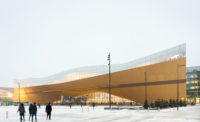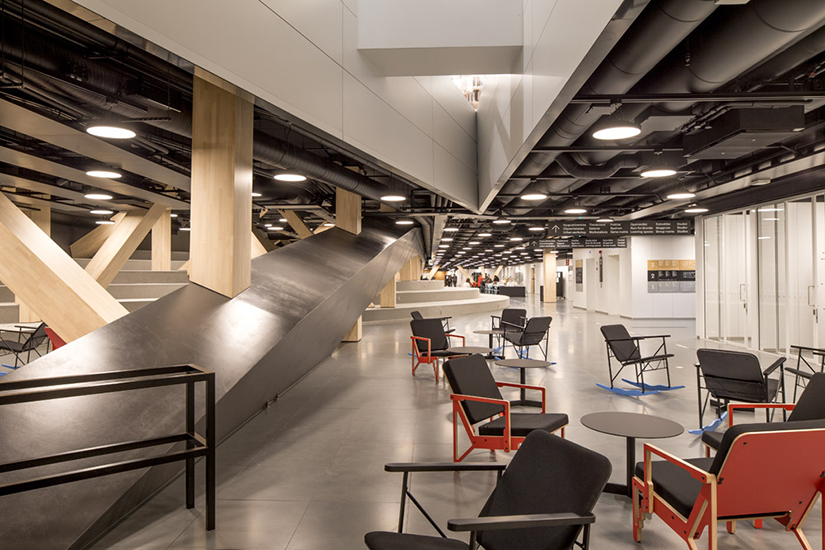Helsinki Dedicates “Oodi (Ode)”, Its New Central Library
Helsinki

Photo © Danica O. Kus

Photo © Danica O. Kus

Photo © Danica O. Kus

Photo © Danica O. Kus

Photo © Danica O. Kus

Photo © Danica O. Kus

Photo © Danica O. Kus

Photo © Danica O. Kus








Architects & Firms
A land of 100,000 lakes? More aptly and accurately, Finland is a nation of 100 percent literacy, a land of libraries. The country celebrated its 101st year of independence on December 6 by dedicating “Oodi (Ode),” the long-awaited new Helsinki Central Library, designed by the locally based ALA Architects, following their selection through a 2014 international competition that attracted 544 entries.
Situated in the cultural heart of the nation’s capital, Oodi’s spruce-clad, glass-topped volume bounds the eastern edge of “Kansalaistori (Citizen’s Square),” completing a civic space of cultural expression that is defined by the adjacent contemporary buildings for art, performance and information: Kiasma, the Museum of Contemporary Art by Steven Holl, (1991); Sanoma-talo, the Helsinki news corporation’s headquarters by SARC (1993); and the Helsinki Music Center by LPR Architects, (2011). The symbolic character of the square is further amplified by the nearby Helsinki Railway Station by Eliel Saarien (1915), J.S. Siren’s House of Parliament (1929), and Alvar Aalto’s Finlandia Hall (1974).
To this urban ensemble of collective civic aspirations, “Oodi” provides an expanded understanding of the contemporary library: both an “urban living room”—with a forum and theater for the exchange of ideas and information—and a “workshop”—an open-access studio for cultural production. Of course, there are books, too, and the intimate, reflective act of reading is still valued in “Oodi”’s opalescent top-level “Book Heaven,” only now supported, literally and figuratively, by the resources and activities available on the column-free ground-floor off the public square, and the “maker-spaces” of “the Attic” level in-between. These internal dynamics are made possible by an innovative arching steel bridge structure, spanning 100 meters, anchored into a reinforced concrete tension slab that is elegantly concealed within the tailored facade surfaces.
Part of this re-visioning of the library’s role was in ALA’s original competition entry, but much also resulted from a deep engagement with the library staff and public participation in design development. At the same time, the library’s re-design of staffing and services removed administrative offices from the program; instead there is a reliance on efficient technologies for book check-outs, returns and shelving—meant to maximize staff availability to the library user. This is a high ambition but also necessary: the library anticipates 10,000 visitors per day and 2.5 million annually.
Underlying the planning for the library’s efficiency is an overall passive energy design approach; the building envelope of Finnish spruce and glass expanses is sensitive to local climate conditions and maximizes the admission of natural light. The design’s thermal performance and energy consumption has been calibrated through intensive BIM to a nearly Net Zero Energy Building (nZEB) level.
“Oodi’s” importance in its purpose, siting, design, and construction, cannot be overrestimated. Combining the desired intimacy and individual attentiveness of a community library with urban monumentality at a historic moment for Finland, Helsinki’s Central Library more than fulfills the nation’s aspirations.












